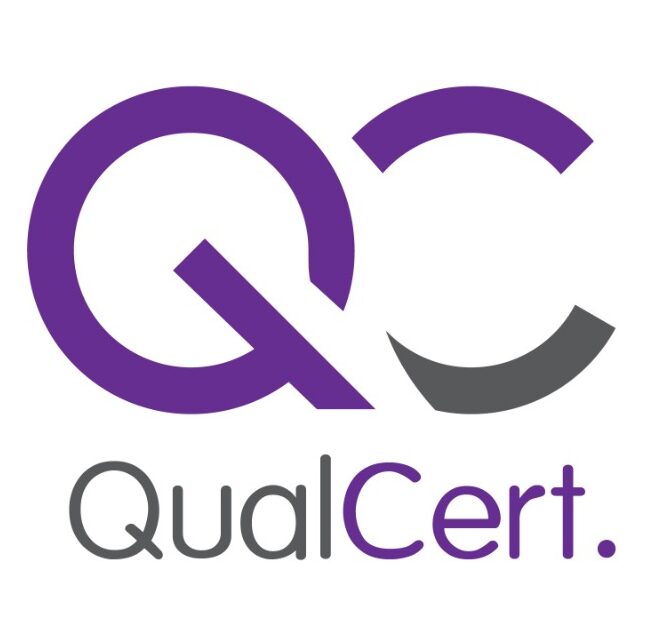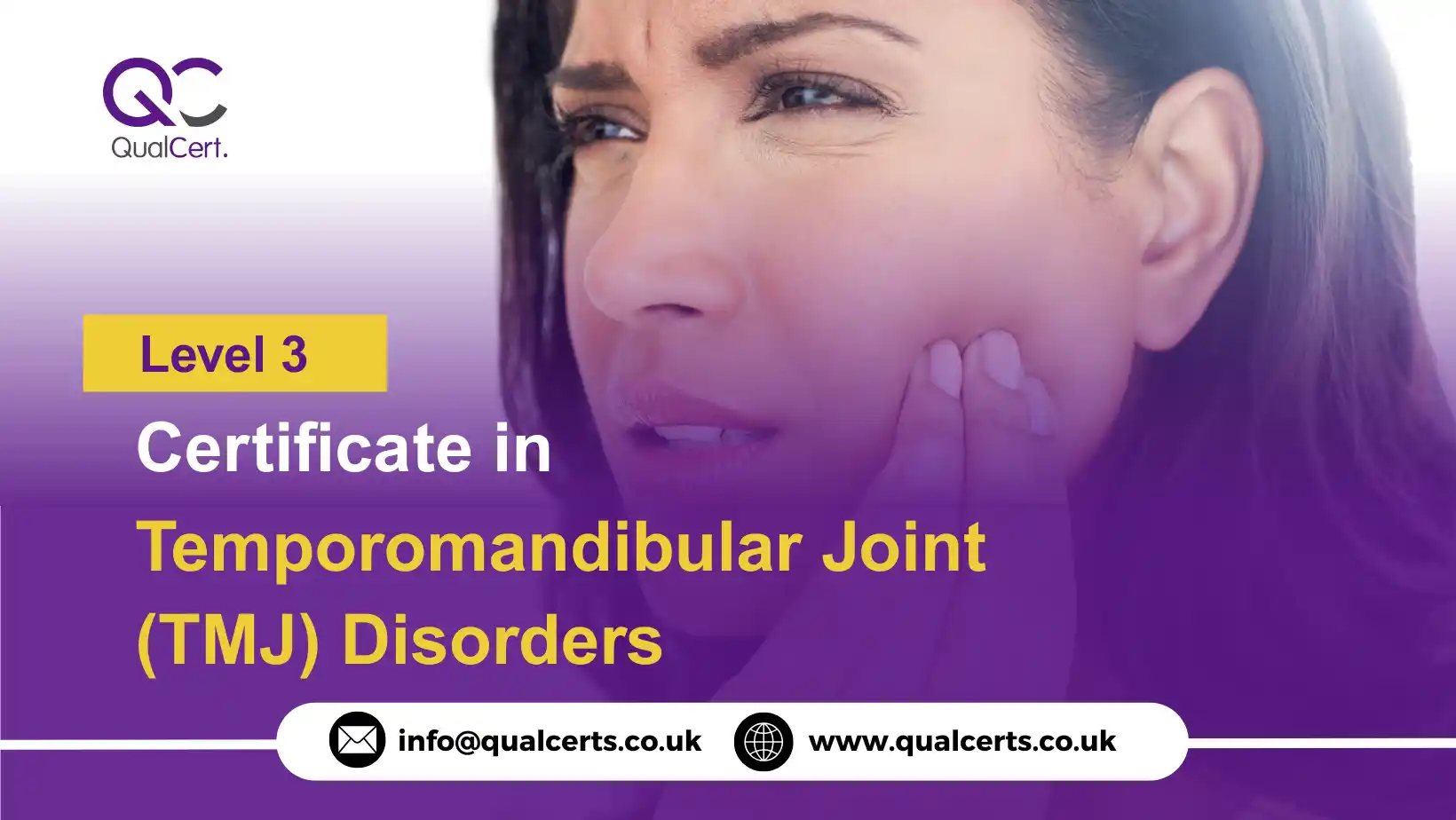The QualCert Level 3 Certificate in Temporomandibular Joint (TMJ) Disorders is a professionally recognised qualification tailored specifically for experienced practitioners seeking to enhance their clinical expertise and advance their career in the field of TMJ health. This specialised course is not intended for beginners; rather, it is designed for learners who already possess a foundational understanding of anatomy, physiology, or relevant clinical practice, and who are looking to broaden their knowledge and improve outcomes for patients presenting with TMJ-related issues.
Through in-depth theoretical learning and practical insight, this qualification supports learners in gaining a comprehensive understanding of the causes, symptoms, diagnosis, and management of TMJ disorders. It contributes significantly to Continuing Professional Development (CPD), enabling professionals to stay up to date with current practices and reinforce their competence in specialised care.
Centres approved to deliver the QualCert Level 3 Certificate in TMJ Disorders must demonstrate a commitment to educational excellence. This includes ensuring that all tutors and assessors are suitably qualified, experienced, and capable of delivering high-quality instruction. Furthermore, training centres are required to provide appropriate materials, equipment, and resources to facilitate effective learning and ensure each learner has the support needed to succeed.
This qualification empowers professionals to deepen their understanding, gain confidence in their clinical decision-making, and add valuable expertise to their scope of practice, ultimately enhancing patient care and career progression.
Course Contents of QualCert Level 3 Certificate in Temporomandibular Joint (TMJ) Disorders :
The QualCert Level 3 Certificate in Temporomandibular Joint (TMJ) Disorders , offers 20 Credits, requiring a Total Qualification Time (TQT) of 100 hours, including 70 Guided Learning Hours (GLH).
| Unit Ref# | Unit Title | Credit | GLH | TQT |
| QC27019-1 | Anatomy and Physiology of the Temporomandibular Joint (TMJ) | 4 | 14 | 20 |
| QC27019-2 | Assessment and Diagnosis of TMJ Disorders | 4 | 14 | 20 |
| QC27019-3 | Pathophysiology and Common Conditions Affecting the TMJ | 4 | 14 | 20 |
| QC27019-4 | Non-Invasive Management Techniques for TMJ Disorders | 4 | 14 | 20 |
| QC27019-5 | Professional Practice and CPD in TMJ Disorder Management | 4 | 14 | 20 |
Entry Requirements for the QualCert Level 3 Certificate in Temporomandibular Joint (TMJ) Disorders :
To enrol in the QualCert Level 3 Certificate in Temporomandibular Joint (TMJ) Disorders, learners must meet the following entry requirements. These standards are designed to ensure learners are suitably prepared to undertake advanced study and gain the most from this specialised qualification.
Minimum Age
- Learners must be at least 18 years of age at the time of registration.
Educational Background
- A relevant Level 2 qualification or equivalent in anatomy, physiology, healthcare, or clinical practice is required.
- Learners must have a sound understanding of basic human biology and musculoskeletal systems.
Professional Experience
- This course is designed for experienced practitioners only.
- Applicants must have prior experience in a clinical, health, or therapeutic setting and be looking to enhance their skills and knowledge in managing TMJ disorders.
Language Proficiency
- Learners must have a good command of the English language (both written and spoken) to effectively engage with course materials and assessments.
- Where English is not the learner’s first language, a suitable level of proficiency (equivalent to CEFR Level B2 or higher) is recommended.
Commitment to Continuing Professional Development (CPD)
- Learners must demonstrate a clear commitment to ongoing professional development, as this qualification contributes to CPD progression in clinical practice.
Access to Required Resources
- Learners must have access to reliable internet, digital devices, and any specified learning materials or clinical tools as advised by the training centre.
Learning Outcomes for the QualCert Level 3 Certificate in Temporomandibular Joint (TMJ) Disorders :
Anatomy and Physiology of the Temporomandibular Joint (TMJ)
- Identify the key anatomical structures of the temporomandibular joint and surrounding areas
- Describe the muscular and skeletal components involved in TMJ function
- Explain the biomechanics of jaw movement and its relationship to TMJ health
- Understand the neurological and vascular supply relevant to the TMJ
- Recognise the impact of anatomical variations on TMJ disorders
Assessment and Diagnosis of TMJ Disorders
- Conduct a systematic clinical assessment of the temporomandibular joint
- Take a comprehensive patient history relevant to TMJ dysfunction
- Recognise signs and symptoms of common TMJ disorders
- Apply appropriate diagnostic tools and techniques within scope of practice
- Understand the role of interdisciplinary referral in TMJ diagnosis
Pathophysiology and Common Conditions Affecting the TMJ
- Explain the pathophysiological mechanisms underlying TMJ disorders
- Identify common conditions such as disc displacement, arthritis, and bruxism
- Distinguish between acute and chronic TMJ dysfunction
- Understand the influence of systemic conditions on TMJ health
- Analyse the risk factors contributing to TMJ disorders
Non-Invasive Management Techniques for TMJ Disorders
- Evaluate evidence-based non-invasive interventions for TMJ care
- Apply therapeutic approaches such as splint therapy, exercises, and manual techniques
- Develop management strategies tailored to patient needs and condition severity
- Understand the importance of patient education and self-care in TMJ recovery
- Recognise when to refer for additional or specialist intervention
Professional Practice and CPD in TMJ Disorder Management
- Understand ethical and legal responsibilities in TMJ disorder care
- Maintain accurate and professional clinical records
- Demonstrate effective communication and patient-centred care
- Reflect on personal learning and professional development needs
- Develop a structured CPD plan aligned with professional goals and regulatory requirements
The QualCert Level 3 Certificate in Temporomandibular Joint (TMJ) Disorders is specifically designed for qualified and experienced professionals working in clinical, therapeutic, or healthcare settings who wish to expand their knowledge and enhance their ability to assess and manage TMJ-related conditions.
This course is not suitable for beginners or those without prior clinical training. Instead, it is aimed at individuals who already have a strong foundation in anatomy, physiology, and patient care, and are seeking to develop advanced skills in a specialised area of practice.
This course is ideal for:
- Manual therapists (e.g., osteopaths, chiropractors, physiotherapists)
- Dental professionals with an interest in TMJ health
- Clinical massage therapists and myofascial practitioners
- Healthcare practitioners involved in pain management or musculoskeletal care
- Holistic therapists with a clinical background seeking CPD in TMJ work
Whether you’re looking to enhance your professional portfolio, increase your clinical offerings, or gain valuable Continuing Professional Development (CPD) in a high-demand area, this qualification provides the knowledge, skills, and confidence needed to support patients with TMJ dysfunction safely and effectively.
Centres approved to deliver the QualCert Level 3 Certificate in Temporomandibular Joint (TMJ) Disorders must meet strict quality standards to ensure learners receive professional, consistent, and effective training. The following requirements are essential for maintaining qualification integrity and ensuring a high standard of education and assessment.
Qualified and Competent Staff
- Tutors and assessors must hold relevant qualifications in TMJ-related disciplines and have current, practical experience in the subject area.
- Staff must demonstrate appropriate teaching and assessment qualifications or equivalent experience.
- Continuous professional development (CPD) of staff must be maintained and documented.
Suitable Premises and Facilities
- Centres must provide safe, hygienic, and appropriately equipped training environments suitable for both theoretical and practical learning.
- Training rooms must have adequate space, lighting, and facilities for learner comfort and engagement.
- Practical areas must include access to anatomical models, clinical equipment, or simulation tools relevant to TMJ education.
Access to Learning Resources
- Centres must ensure learners have access to up-to-date learning materials, clinical reference guides, and relevant digital or printed resources.
- Access to reliable internet and audio-visual aids should be provided where applicable.
Robust Assessment and Quality Assurance
- Centres must implement effective internal quality assurance procedures to monitor learner progress and maintain assessment standards.
- Accurate and secure record-keeping systems must be in place for learner attendance, assessment results, feedback, and certification.
Learner Support
- Centres must provide appropriate academic and pastoral support to all learners throughout the duration of the qualification.
- Clear communication channels should be established to support learner engagement and success.
Compliance with Regulatory and Awarding Body Guidelines
- Centres must operate in accordance with QualCert policies, procedures, and compliance requirements.
- Any changes to staffing, facilities, or delivery methods must be reported to the awarding body promptly.

